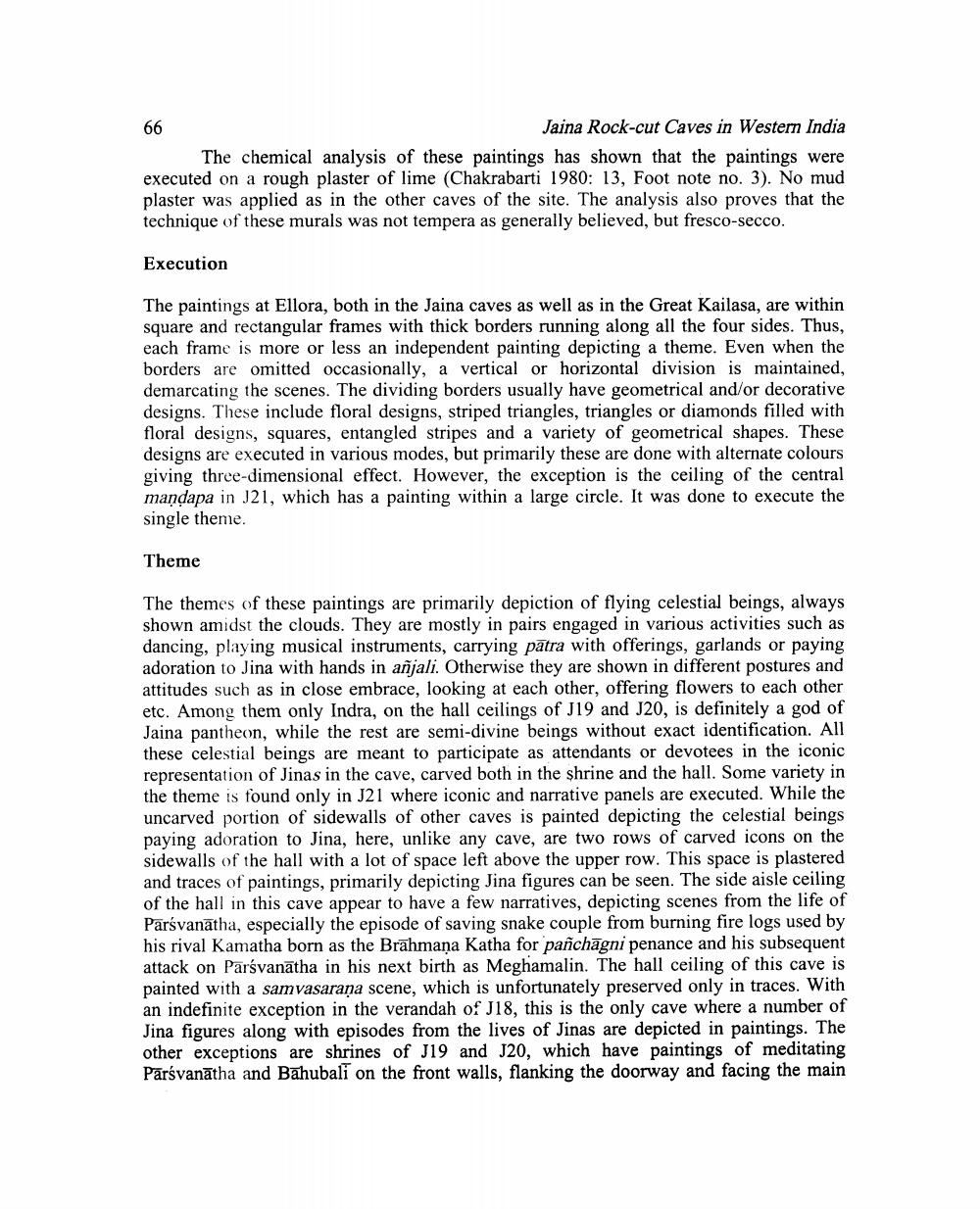________________
66
Jaina Rock-cut Caves in Western India The chemical analysis of these paintings has shown that the paintings were executed on a rough plaster of lime (Chakrabarti 1980: 13, Foot note no. 3). No mud plaster was applied as in the other caves of the site. The analysis also proves that the technique of these murals was not tempera as generally believed, but fresco-secco.
Execution
The paintings at Ellora, both in the Jaina caves as well as in the Great Kailasa, are within square and rectangular frames with thick borders running along all the four sides. Thus, each frame is more or less an independent painting depicting a theme. Even when the borders are omitted occasionally, a vertical or horizontal division is maintained, demarcating the scenes. The dividing borders usually have geometrical and/or decorative designs. These include floral designs, striped triangles, triangles or diamonds filled with floral designs, squares, entangled stripes and a variety of geometrical shapes. These designs are executed in various modes, but primarily these are done with alternate colours giving three-dimensional effect. However, the exception is the ceiling of the central mandapa in J21, which has a painting within a large circle. It was done to execute the single theme.
Theme
The themes of these paintings are primarily depiction of flying celestial beings, always shown amidst the clouds. They are mostly in pairs engaged in various activities such as dancing, playing musical instruments, carrying patra with offerings, garlands or paying adoration to Jina with hands in añjali. Otherwise they are shown in different postures and attitudes such as in close embrace, looking at each other, offering flowers to each other etc. Among them only Indra, on the hall ceilings of J19 and J20, is definitely a god of Jaina pantheon, while the rest are semi-divine beings without exact identification. All these celestial beings are meant to participate as attendants or devotees in the iconic representation of Jinas in the cave, carved both in the shrine and the hall. Some variety in the theme is found only in J21 where iconic and narrative panels are executed. While the uncarved portion of sidewalls of other caves is painted depicting the celestial beings paying adoration to Jina, here, unlike any cave, are two rows of carved icons on the sidewalls of the hall with a lot of space left above the upper row. This space is plastered and traces of paintings, primarily depicting Jina figures can be seen. The side aisle ceiling of the hall in this cave appear to have a few narratives, depicting scenes from the life of Parsvanatha, especially the episode of saving snake couple from burning fire logs used by his rival Kamatha born as the Brahmana Katha for panchagni penance and his subsequent attack on Parsvanātha in his next birth as Meghamalin. The hall ceiling of this cave is painted with a samvasarana scene, which is unfortunately preserved only in traces. With an indefinite exception in the verandah of J18, this is the only cave where a number of Jina figures along with episodes from the lives of Jinas are depicted in paintings. The other exceptions are shrines of J19 and 520, which have paintings of meditating Parsvanātha and Bahubali on the front walls, flanking the doorway and facing the main




